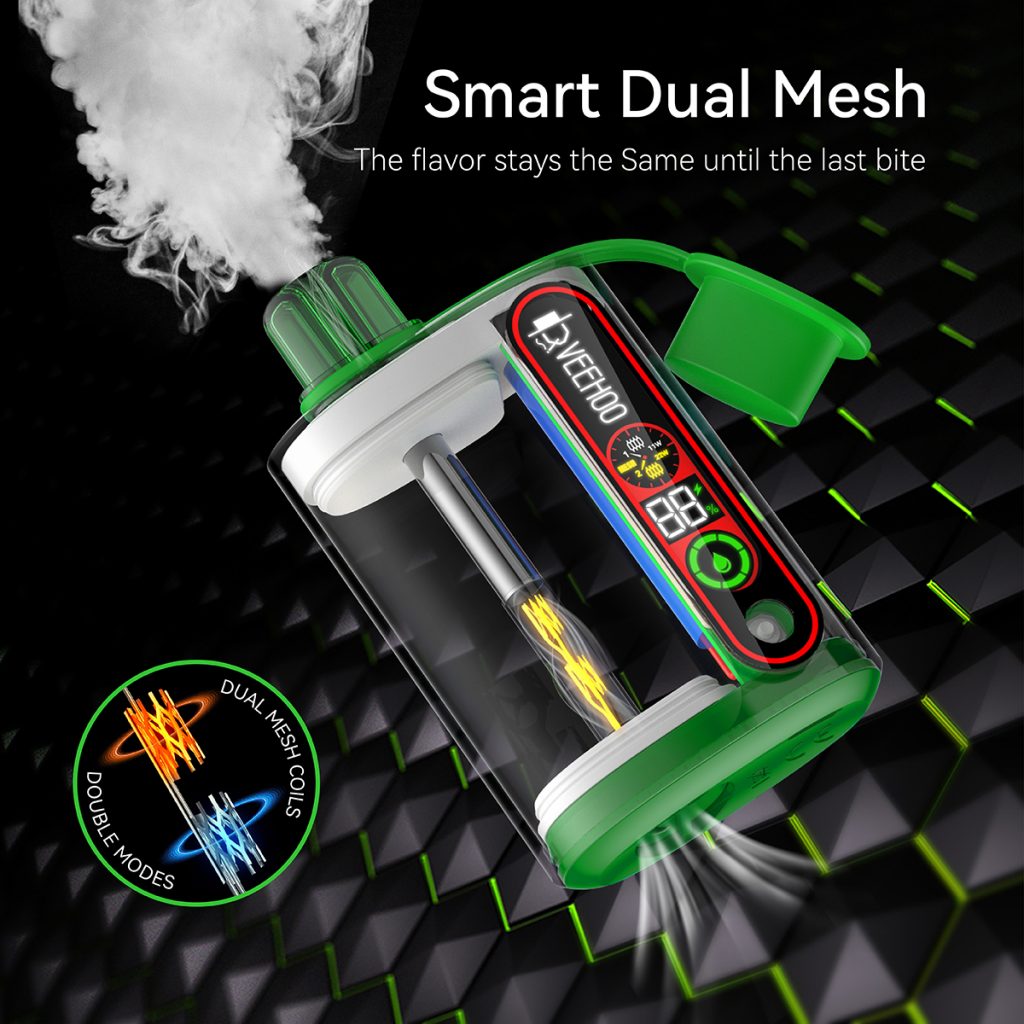Introduction:
With the continuous development of the vape industry, various new nicotine products have begun to emerge. Among them, nicotine pouches have attracted much attention as a smoke-free, portable product suitable for non-smoking places. This article will explore what a nicotine pouch is and whether it has the potential to be a viable alternative to vapes. At the same time, we will also examine the hidden dangers of the development of nicotine bags to fully understand this emerging product.
1. What is a nicotine pouch?
Nicotine pouches are compact, smokeless oral nicotine products. It is similar to chewing gum but does not contain tobacco. Nicotine pouches are usually made of cellulose or natural plant fibers and contain nicotine and flavors inside. When used, the nicotine bag is placed in the mouth, and the nicotine is absorbed through the oral mucosa, providing nicotine enjoyment similar to traditional cigarettes, but without the problems of combustion and second-hand smoke.
Nicotine pouches, also known as nicotine chewing gum, are an alternative to cigarettes that help people quit smoking. These tea bag-like packets deliver the optimal dose of nicotine when placed under the upper lip for about 15 to 30 minutes, and are smoke-free, odorless and don’t require spitting, among other benefits. This product is more effective than vapes, with data from European countries showing that nicotine pouches have a 60%-75% success rate in motivating people to quit smoking.

Nicotine replacement therapy uses low-dose medicinal nicotine to replace the nicotine in tobacco, using a gradual reduction method to effectively help smokers get rid of their dependence on cigarettes and reduce withdrawal symptoms. Slowly, the craving for cigarettes gradually decreases until it disappears, allowing smokers to easily achieve the goal of getting rid of “addiction”.
Among the smoking cessation aids recommended by the World Health Organization, nicotine replacement therapy products (such as nicotine chewing gum, nicotine patches, etc.) are recommended as first-line drugs.
Nicotine pouches originated in the Scandinavian region of Northern Europe. As “snuff”, they provide users with a means of ingesting nicotine with high concentration and explosive power in an environment where combustible tobacco is inconvenient to smoke. In 2017, Swedish Match Company launched ZYN, a tobacco-free nicotine pouch, which is widely regarded as a turning point in the rapid rise of modern snus.
Sweden is on track to officially become a “smoke-free” country, with a smoking rate of just over 5%. Sweden has achieved this remarkable achievement of quitting smoking by ensuring the accessibility, acceptability and affordability of safer alternatives to smoking, such as vapes and nicotine pouches.
2. Can nicotine pouches become a powerful alternative to vapes in the future?
Nicotine bags have rapidly emerged in recent years and are regarded as strong competitors to vapes. Its appeal lies in the following aspects:
Portability and Applicability in Non-Smoking Places: The nicotine pouch’s compact design makes it easy to carry and does not require ignition or charging. It produces no smoke or odor, can be used in non-smoking areas, and provides a convenient way to consume nicotine.
Minority Market: Nicotine pouches have gained widespread recognition and acceptance in some countries and regions, especially in Europe and North America. For those who don’t like or can’t use traditional cigarettes or vapes, nicotine pouches offer a new option.
Progressive smoking cessation tool: Nicotine pouches can serve as a progressive smoking cessation tool for those who wish to gradually overcome their nicotine addiction. Users can gradually reduce the amount of nicotine pouches used to achieve their goal of quitting smoking.
Despite the advantages mentioned above, nicotine pouches still face some challenges.

3. Hidden dangers in the development of nicotine bags
The development of nicotine bags still faces some potential problems:
Lack of norms and regulations: The rapid growth of the nicotine pouch market may lead to regulatory lag and lack of unified safety standards and regulations. This may lead to some low-quality or non-compliant products entering the market, posing risks to user health.
Risks of teen use: Like vapes, nicotine pouches face potential risks of abuse by teens. Attractive packaging design and different flavor options may have attracted the attention of young people, and supervision and preventive measures for teenagers need to be strengthened to prevent minors from abusing nicotine pouches.
Lack of long-term research: As a relatively new product, nicotine pouches’ effects on the human body from long-term use have not been fully studied. Therefore, more scientific research is needed to evaluate the safety and potential risks of nicotine pouches.

In conclusion:
As a smoke-free, portable nicotine product suitable for non-smoking places, nicotine pouches have the potential to become a powerful alternative to vapes. Its portability, applicability in non-smoking places, and characteristics as a progressive smoking cessation tool have attracted some users. However, the development of nicotine pouches still faces hidden dangers such as insufficient supervision, risks of youth use and lack of long-term research. To ensure nicotine pouches are safe and compliant, regulatory measures need to be strengthened and scientific research conducted to assess the effects of their long-term use.
Tags: What are nicotine pouches,Can nicotine pouches replace vapes,Hidden dangers in the development of nicotine bags,veehoo vape